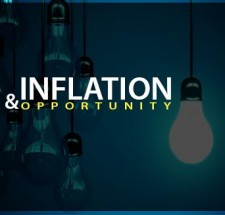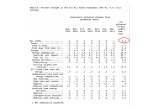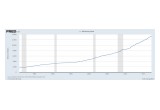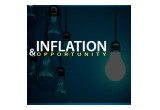
The US dollar has been weak recently, falling some 2.5% over the last two weeks, and providing a great opportunity to invest in precious metals.
As the central thesis for an emerging precious metals bull market revolves around an increased awareness by world citizens that the currencies they hold as savings are intrinsically worthless, any time we see significant weakness in a major currency we must place our attention there. And when the currency in question is the US dollar – the world’s reserve currency – the examination becomes even more prescient.
The US dollar has been weak recently, falling some 2.5% over the last two weeks. Suffice it to say, investors are having doubts that President Trump will be able to deliver on the promises of lowering taxes, increasing infrastructure spending, all while lowering the deficit.
Even more so, US dollar fundamentals are already “baked into the cake”, by which we mean this is the first time in world history that not a single currency is backed by anything tangible. As a result, world debt levels are at unprecedented highs, and the democratic system itself seems to dictate that politicians continue to print money to fund never-ending promises to their constituents.
Alexander Tytler, a Scottish judge from the 18th century, summarized it succinctly, and we cannot disagree with him regarding the unsustainability of such a system:
“A democracy is always temporary in nature; it simply cannot exist as a permanent form of government. A democracy will continue to exist up until the time that voters discover that they can vote themselves generous gifts from the public treasury. From that moment on, the majority always votes for the candidates who promise the most benefits from the public treasury, with the result that every democracy will finally collapse due to loose fiscal policy, which is always followed by a dictatorship.”
Image A
Consumer Price Index
We can see evidence for the continued debasement of the US currency all around.
The most recent Consumer Price Index data (CPI), released by the US Bureau of Labor Statistics (BLS) a week ago, shows continued debasement in the form of a 2.7% annualized inflation rate across all items (red highlight circle). This means the value of money is declining by 2.7% per year – even above the Federal Reserve’s self-imposed mandate of a 2.0% inflation.
While 2.7% per year might seem trivial, consider that 10-year Treasuries are yielding less than 2.4% per year, and a saver in a high-yield savings account would be lucky to earn 1.0% per year. These are negative real interest rates.
[A side note: entire books have been written on the inaccuracies in the BLS’s CPI statistics – in other words, the inflation statistics are generally under-reported. We do not disagree with these claims. For example, the BLS uses what is called ‘substitution’ in their methodology – meaning that if the price of wheat rises by a high amount due to inflation, the BLS will perform a substitution by assuming the average family will instead consume corn. In this way they will leave out the price increase of wheat from the CPI statistics. This largely defeats the purpose of the CPI, which was originally designed to measure the price level of a stable basket of goods. Despite these flaws, the CPI is widely-discussed in the mainstream press, and it gives us at minimum an understated-baseline measure of inflation with which to examine trends.]
Further, a 2.7% inflation rate, compounded, means the currency in question will end up losing half of its value every 26 years. So for a saver in US dollars, the Federal Reserve takes 50% of one’s purchasing power every generation through excessive printing of the currency.
Money Supply
We see further evidence for the relentless inflation through the Fed’s own data on M2 money stock. M2 is one of several metrics used by economists to measure the total quantity of dollars in existence, and it includes physical cash and coins, checking accounts, savings accounts, and money market accounts. It is the broadest measure of money that is currently published by the Fed.
Image B
[Side note: an even broader measure of money supply, M3, was published by the Fed up until 2006. M3 included all of M2’s components, plus institutional accounts. The Fed stopped publishing M3 in 2006 claiming the costs were too high to compile and publish the data. This – from an agency that literally owns a printing press and can create money at will.]
The fact remains that we live in a world in which monetary debasement is relentless by central banks, and this has never happened on a worldwide basis in history. In past inflationary periods, for example Germany during the Weimar hyperinflation of the 1920’s, citizens could protect themselves from rampant money printing by holding US dollars, which were backed and redeemable for 1/20 an ounce of gold at that time.
Presently, not a single currency is backed by anything tangible, and most central banks are engaged in similar policies as the Fed. The only place to turn if one desires to save hard money over time is precious metals.
The truth is, if we lived during a time of stable monetary systems, we would not want to invest in precious metals per-se. Precious metals would be money, or money would be backed by precious metals in redeemable form. One would thus hold precious metals as stable-value savings.
When an appropriate growth investment opportunity came about (such as a business, stocks, real estate, etc.), one would have the savings set aside and ready to invest. When he wanted to sell the investment, he would then convert it back into stable-value savings – precious metals.
But we don’t live in a world of stable values – we live in a world of consistently debased currencies. This presents one of the major challenges of our generation, but also one of the biggest opportunities.
Opportunity – Is There Anybody Out There?
Opportunity arises when an individual sees something that the majority does not or cannot see. In the markets, we must have an opinion that is different from the sum of the other participants in order to make a profit.
If there was no difference in opinion between us and the market, there would be no opportunity for profit.
The opportunity to invest and to make a real return by ownership of precious metals exists because the majority of the world’s population does not yet recognize the unprecedented nature of the worldwide fiat system.
We can confirm this general lack of awareness by simple conversations with those in other communities. Step aside from any internet-based investment communities you may be involved with – and ask the average person you meet at a coffee shop or the grocery store or a bar if they have decided to allocate any savings to precious metals – the answer will almost always be “no.”
Most western citizens do not even know that it is possible to own precious metals, let alone understand the relative merits of gold versus silver, various bullion products, or numismatics.
The point of this is that we must periodically disassociate ourselves from the niche communities we all participate in, and ask the question: “Do the majority agree or disagree with us on the merits of owning physical precious metals versus fiat currency?”
[If you can honestly answer that the majority of people agree with you and do own precious metals, please send a message to the editor, because I would like to know where this community is located. –C.A.]
Otherwise – as contrarians – we should celebrate the fact that very few people in western society see the value in holding precious metals, for herein lies the opportunity.
The opportunity exists because we disagree with the market at current prices. And if a small percentage of western citizens begin to agree with us – and then divert a portion of their savings into either gold or silver – the values of the metals will be forced upward by a factor of several multiples. There simply is not enough physical metal available for every household to move a portion of its assets into either physical gold or silver at today’s prices.
Christopher Aaron,
Bullion Exchanges Market Analyst
Christopher Aaron has been trading in the commodity and financial markets since the early 2000's. He began his career as an intelligence analyst for the Central Intelligence Agency, where he specialized in the creation and interpretation of the pattern of life mapping in Afghanistan and Iraq.
Technical analysis shares many similarities with mapping: both are based on the observations of repeating and imbedded patterns in human nature.
His strategy of blending behavioral and technical analysis has helped him and his clients to identify both long-term market cycles and short-term opportunities for profit.
Share:



